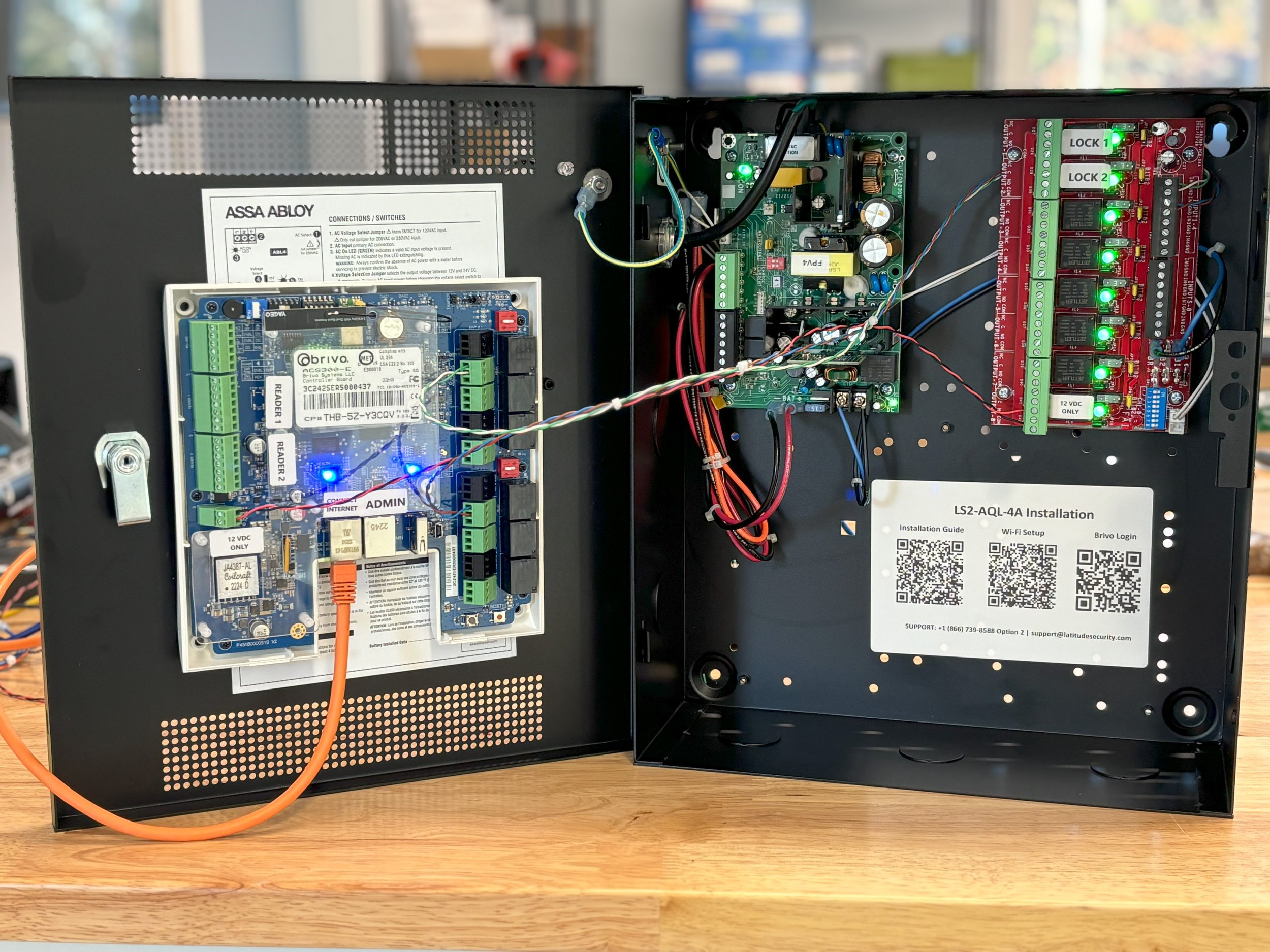What is Access Control? Understanding the Basics, Benefits, and Why It Matters for Your Business
Ever tapped a key fob to get into the gym? Punched a code to unlock your front door? Swiped an ID card at work? If so, you've already seen access control in action. It’s all around us, subtly shaping how we move through the world, and it's only becoming more relevant. In this blog, I'm going to break down the basics of physical access control, so you can understand how it works and make the most of what it has to offer.
What Exactly is Access Control?
Physical access control is a security system designed to regulate entry into physical spaces, such as office buildings, homes, and secure facilities. It’s designed to make sure only the right people can access the right places at the right times.
Why Is it Important?
A traditional lock and key can keep a door shut, but what happens when a key is lost, copied, or the door is accidentally left unlocked? That’s when access control comes in. Access control offers a smarter way to manage who goes where and when. It’s like giving your building a brain. This level of control is appreciated by businesses and people who prioritize security, safety, and efficiency.
Access control doesn’t just secure spaces, it can also become a revenue generator for spaces. This is a game-changing feature for businesses that rely on the use of their physical space, like indoor playgrounds, batting cages, coworking spaces, and pickleball courts. Owners of these facilities often install access control systems to literally sell access to their space. When integrated with an eCommerce platform, these systems allow customers to purchase an access credential that grants entry—automating the process entirely. With the right setup, businesses that depend on access can operate with little to no staff.
Components of An Access Control System
When it comes to simplicity, the classic lock and key definitely still win. But the components of an access control system aren't rocket science, and are easy to understand with a bit of familiarity. Here’s a quick breakdown:
Credentials: Similar to a key, this is what the user physically presents at the door. Credentials come in many forms, but a few include a key fob, PIN code, mobile pass, a barcode, a biometric, and a QR code. If the system recognizes the credential as authorized, the door unlocks and the user may enter the space.
Readers: If the credential is the key, the reader is the smart lock. Mounted next to the door, it scans the credential and sends the data to the control panel for a decision.
Control Panel: Think of this as the brain of the access control system. This is where central processing occurs, receiving credential data from the reader, comparing it against the system's data, and determining whether to grant or deny access.
Locks: This one’s pretty straightforward, but it’s the physical barrier that keeps the door locked. For access control to work, you’ll need an electronic lock that can respond to signals from the system.
Software: The control center for it all. The software stores user credentials, manages schedules, logs activity, and gives you real-time insights into who’s coming and going.
Together, these components form a complete access control system. Thankfully, putting it all together isn’t complicated. Installation is straightforward and doesn’t require a huge time investment.
Best Practices for Access Control
Installing a system is only the first step. To keep your system secure and effective, make sure to follow these tips.
Regularly Review Who Has Access: As people get hired, leave, or switch roles, their access needs change. Make it a habit to review and update permissions every few months or at least once a year to make sure everyone only has access to what they actually need. It’s a simple step that helps reduce the risk of someone accidentally or intentionally accessing something they shouldn’t.
Train Your Team: Make sure everyone understands how your access control system works and what’s expected of them. A little training goes a long way. Teach them how to use the system properly, why it's important to protect their login info, and what to do if they notice anything suspicious.
Keep an Eye on the Logs: Most access control systems keep logs of who accessed what and when. Make a point to check these regularly. It’s one of the easiest ways to spot anything unusual before it becomes a serious problem.
Protect the Hardware Too: Don’t forget about the physical side of things. Make sure your card readers, controllers, and any other hardware are secured and not easily tampered with. Also consider things like moisture, heat, or power issues that could affect reliability.
That concludes my 360° overview of access control. Hopefully, this gives you a clearer picture of how valuable a well-designed system can be. Access control isn’t just a smart security choice, its a long-term investment in your business’s safety and growth. The sooner you put the right system in place, the sooner you can move forward with confidence, knowing your space is secure from day one.
Ready to take the next step?
Explore Rhōmb, our access control software solution designed to help you run a truly staffless facility. Or, if you're looking to install access control hardware, check out Latitude Security Solutions for professional setup and support.

